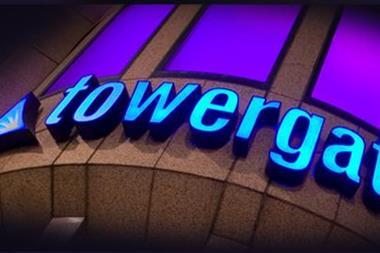The consolidator reports its full-year numbers next week, which should provide some interesting insight into the company

Towergate will be releasing its 2011 results late next week. The company underwent a great deal of change in 2011, including a total refinancing, a new management team and a new structure, which now includes CCV, Countrywide and PowerPlace. It will be interesting to see how the company emerges from such an eventful year. Here are a few things to watch out for:
- The CCV effect: Towergate’s quarterly reports to bondholders have given an idea of the consolidator’s performance to date, but they only tell part of the story. They exclude CCV, which has been part of the overall group since February. This is because CCV is not integrated into Towergate Finance, the part of the company that issued the bonds. Instead Towergate Finance and CCV are sister companies within the new overarching holding company, Towergate PartnershipCo. Comparing Towergate’s full annual numbers with the latest bondholder report will give an idea of how CCV is affecting the entire group. Will it help or hinder?
- EBITDA growth: One of Towergate’s stated aims is to grow earnings before interest, tax, depreciation and amortisation (EBITDA). This gives it a greater pot to pay interest, and will improve its leverage ratio (see below), which rating agencies are keeping a firm eye on. However, this requires revenue growth, which has been hard to come by at Towergate and other brokers. The bondholders report suggests EBITDA was down 12% at the nine-month stage compared with the previous nine months. Will the fourth quarter and the CCV effect (see above) result in a positive number?
- Interest coverage: This indicates how many times a company’s EBITDA covers the interest payments it has to make on its debt and is essentially an indication of how comfortably the company can pay its interest. Many investors look for an interest coverage ratio of around 1.5 times EBITDA to interest. At the nine-month stage, using the numbers in the bondholders’ report, EBITDA stood at 1.4 times interest payments.
- Leverage ratio: This shows how much debt the company has relative to its profits. Some consider that in order to be taken seriously by stock market investors, which Towergate will have to consider if it chooses to float, a company’s debt should be no higher than three times EBITDA. Towergate’s bondholders’ report shows that net borrowings were 8.8 times EBITDA at the nine-month stage. Will a fourth quarter of earnings improve this metric?
- Updates on acquisitions and flotation: One thing is certain: Towergate will continue to buy businesses. It is already known to be considering Cobra and is likely to have several other deals in the pipeline as it looks to spend its £90m acquisition fund. The company may include details of deals completed in 2011 and early 2012, plus prospects for further acquisitions. It is perhaps unlikely at this stage, but the company may also give an update on its thinking about possible flotation.




































No comments yet